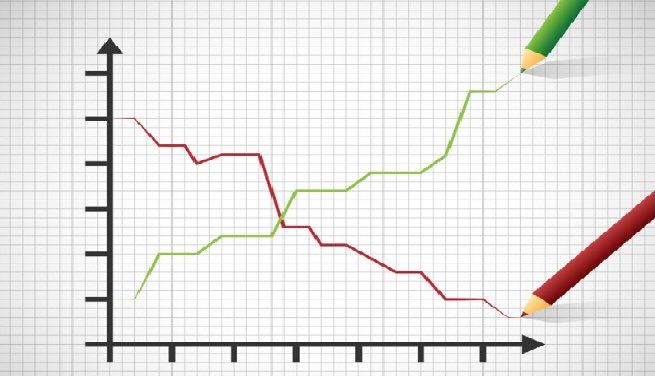MarketLens
U.S. Tariff Hikes on Chinese Goods: Economic and Market Impacts Explained
Impact on the Chinese Economy
Competitiveness and Market Dynamics
Despite the imposition of tariffs, Chinese manufacturers may retain their competitive edge due to their cost performance and technological quality. For instance, even with a 100% tariff on EVs, some Chinese models, such as those from BYD, are expected to remain cheaper than their American counterparts. This resilience suggests that the tariffs may have limited effectiveness in reducing the competitiveness of Chinese products in the U.S. market.
Moreover, the global economy’s interdependence means that U.S. tariff increases could inadvertently harm American and European manufacturers that produce cars in China for global markets. This interconnectedness complicates the straightforward application of tariffs as a tool for economic protectionism.
Strategic and Geopolitical Considerations
The tariffs are perceived by some as a strategic tool used by American politicians to stifle the growth of China’s emerging industries. This perspective highlights the broader geopolitical motives behind the tariff hikes, which extend beyond purely economic concerns. The Chinese Ministry of Commerce (MOFCOM) has criticized the U.S. for its unilateralism and protectionism, arguing that these measures violate World Trade Organization (WTO) rules and disrupt global supply chains.
Limited Effect on Specific Industries
Certain industries in China, such as those producing ship-to-shore cranes, are expected to experience limited overall effects from the tariff increases. According to Wang Xing from Roland Berger, these industries remain globally competitive due to their technological and cost advantages. This suggests that while the tariffs may create short-term disruptions, they are unlikely to significantly undermine China’s industrial capabilities in the long run.
Long-term Challenges and Retaliation
The increased tariffs on EVs and other products will raise production costs for U.S. automakers, potentially leading to a negative ripple effect on the U.S. EV market and supply chains heavily reliant on Chinese manufacturing. In response, China is expected to implement countermeasures to protect its firms’ interests, further escalating trade tensions between the two countries.
Impact on the U.S. Economy
Consumer Prices and Inflation
The tariffs are anticipated to increase import costs for U.S. companies and consumers, leading to higher prices for goods. For example, Professor Kimberly Clausing estimates that the proposed tariffs could cost a median U.S. family about $1,700 annually, disproportionately affecting lower- and middle-income households. This increase in consumer costs may reduce overall demand for goods, including those produced in China, thereby affecting Chinese exports to the U.S.
Market Dynamics and Supply Chains
The American Association of Port Authorities (AAPA) highlighted that the proposed 25% tariff on ship-to-shore cranes could exceed $130 million in added costs, adversely affecting port efficiency and capacity. This disruption in supply chains could have broader implications for the U.S. economy, particularly in sectors reliant on timely and efficient logistics.
Financial Market Reactions
The financial markets are highly sensitive to tariff policies, with potential declines in equities and shifts in bond yields and currency values depending on the tariff structure enacted. For instance, UBS predicts that U.S. equities could fall by around 10% in a universal tariff scenario, particularly impacting sectors like retail, auto manufacturing, tech hardware, semiconductors, and certain industrials. Bond yields are anticipated to decline, and the U.S. dollar is likely to weaken due to increased uncertainty.
Historical Context and Economic Efficiency
Historical data indicates that tariffs have not significantly improved U.S. manufacturing employment. The so-called “China shock” ended well before the implementation of tariffs by the Trump administration, and U.S. manufacturing jobs have remained stable despite ongoing Chinese import growth. This suggests that tariffs may not be an effective tool for job creation and could instead lead to inefficiencies across the economy.
Broader Implications for Global Trade
Retaliatory Measures and Trade Wars
The potential for retaliatory tariffs from China is a significant concern. During the 2018-2019 trade tensions, countries like China, Canada, and the EU imposed tariffs on U.S. exports, raising the prices of U.S. goods internationally and further discouraging foreign purchases. This tit-for-tat escalation could negatively affect both economies, leading to reduced trade opportunities and increased market volatility.
Impact on Agricultural Exports
U.S. agricultural exports are particularly vulnerable to retaliatory measures. For example, if China imposes a 20% tariff increase on U.S. agricultural products, it could lead to a 32.6% reduction in U.S. soybean exports, amounting to a loss of $7.6 billion. This would have substantial implications for states like Illinois, Iowa, Nebraska, and Kansas, which are heavily reliant on agricultural exports.
Shifts in Global Supply Chains
The tariffs are expected to contribute to reducing U.S. imports from China and increasing imports from alternative sources, including U.S. allies and partners. This supports U.S. supply chain diversification and resilience. However, the complexity of global supply chains means that tariffs can impact domestic producers as much as foreign competitors, leading to potential inefficiencies and increased production costs.
Strategic and Policy Considerations
National Security and Technological Competition
The tariffs are often justified on national security grounds, particularly in relation to technology transfer and intellectual property concerns. The U.S. Department of Commerce has implemented new export controls on advanced technologies such as quantum computing and semiconductor manufacturing equipment, reflecting ongoing efforts to limit China’s access to high-end technologies crucial for national security.
Economic Nationalism vs. Global Integration
The ongoing trade tensions reflect a broader debate between economic nationalism and global integration. While tariffs are positioned as a tool for economic protectionism, they carry implications for inflation and consumer prices, raising questions about their effectiveness and the broader impact on U.S.-China trade relations. The U.S. economy’s strength lies in the services sector, which employs more workers at higher wages than manufacturing. Reducing barriers to services trade could create more jobs and enhance economic efficiency.
Policy Recommendations
Given the complexities and potential negative impacts of tariffs, alternative policies targeting specific security risks could minimize economic costs. For instance, enhancing workforce skills and investing in technological innovation could better position the U.S. to compete in an interconnected global economy. Additionally, engaging in dialogue and cooperation with China on issues like climate change and financial stability could help mitigate trade tensions and promote mutual economic growth.
Conclusion
The U.S. decision to finalize tariff hikes on Chinese goods, set to take effect on September 27, 2024, will have significant implications for both the Chinese and U.S. economies, as well as global financial markets. While the tariffs aim to protect domestic industries and address unfair trade practices, they are likely to lead to higher consumer prices, supply chain disruptions, and retaliatory measures from China. The broader economic and geopolitical context underscores the need for a balanced approach that considers both national security concerns and the benefits of global trade integration. As the trade landscape continues to evolve, policymakers must carefully weigh the potential costs and benefits of tariff measures to ensure sustainable economic growth and stability.
Related Articles
Category
You may also like
No related articles available
Breaking News
View All →No topics available at the moment






